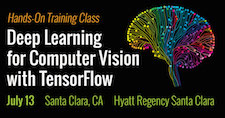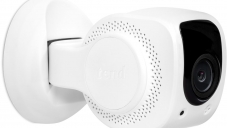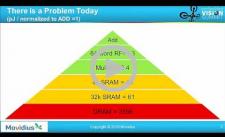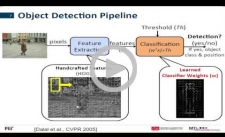| LETTER FROM THE EDITOR |
|
Dear Colleague,
TensorFlow has become a popular framework for creating machine learning-based computer vision applications, especially for the development of deep neural networks. If you’re planning to develop computer vision applications using deep learning and want to understand how to use TensorFlow to do it, then don’t miss next month's full-day, hands-on training class organized by the Embedded Vision Alliance: Deep Learning for Computer Vision with TensorFlow. It takes place in Santa Clara, California on Thursday, July 13. Learn more and register at https://tensorflow.embedded-vision.com.
If you're interested in creating efficient computer vision software for embedded applications, check out next month's free webinar, "OpenCV on Zynq: Accelerating 4k60 Dense Optical Flow and Stereo Vision," delivered by Xilinx and organized by the Embedded Vision Alliance. It takes place on Wednesday, July 12 at 10 am PT. Xilinx will present a new approach that enables designers to unleash the power of FPGAs using hardware-tuned OpenCV libraries, a familiar C/C++ development environment, and readily available hardware development platforms. To register, see the event page.
Brian Dipert
Editor-In-Chief, Embedded Vision Alliance
|
| VISION PROCESSING ARCHITECTURE OPTIONS |
|
Cloud-versus-Edge and Centralized-versus-Distributed: Evaluating Vision Processing Alternatives
Although incorporating visual intelligence in your next product is an increasingly beneficial (not to mention practically feasible) decision, how to best implement this intelligence is less obvious. Image processing can optionally take place completely within the edge device, in a network-connected cloud server, or subdivided among these locations. And at the edge, centralized and distributed processing architecture alternatives require additional consideration. This article from the Embedded Vision Alliance and member companies Tend Insights, Texas Instruments and Xilinx reviews these different architectural approaches and evaluates their strengths, weaknesses, and requirements.
Using Vision to Improve Waste Collection Efficiency
Ben Chehebar, co-founder of Compology, describes a novel vision-based solution that is dramatically improving the efficiency of trash collection. Chehebar discusses the allocation of vision processing resources between edge devices and the centralized server, both as currently implemented and as the architecture is planned to evolve over time.
|
| EMBEDDED VISION ENERGY EFFICIENCY |
|
Dataflow: Where Power Budgets Are Won and Lost
This presentation from Sofiane Yous, Principal Scientist in the machine intelligence group at Intel's Movidius Group, showcases stories from the front lines in the battle between power and performance in embedded vision, deep learning and computational imaging applications. First, Yous demonstrates why good dataflow is so important. Also, he shows why modern techniques and APIs are critical for fast time-to-market, and he’ll summarize relevant academic work. He compares the usage models and benefits of such relevant APIs as TensorFlow and classic approaches for deep learning; standards based approaches for computer vision, and techniques such as Halide for imaging and computational photography. He also presents specific examples such as the GoogleNet implementation under Caffe/TensorFlow and other imaging/vision use cases.
Energy-efficient Hardware for Embedded Vision and Deep Convolutional Neural Networks
Vivienne Sze, Assistant Professor at MIT, describes the results of her team's recent research on optimized hardware for deep learning in this presentation. The goals of MIT's Energy-Efficient Multimedia Systems Group are to increase video compression coding efficiency, speed and energy efficiency, and to make computer vision as ubiquitous as video coding.
|
| UPCOMING INDUSTRY EVENTS |
|
Sensors Expo & Conference: June 27-29, 2017, San Jose, California
AIA Webinar – The Future of Embedded Vision Systems: July 11, 2017, 9:00 am PT
Xilinx Webinar Series – OpenCV on Zynq: Accelerating 4k60 Dense Optical Flow and Stereo Vision: July 12, 2017, 10:00 am PT
TensorFlow Training Class: July 13, 2017, Santa Clara, California
TensorFlow Training Class: September 7, 2017, Hamburg, Germany
More Events
|
| FEATURED COMMUNITY DISCUSSIONS |
|
Opportunity: Senior Account Executive, Computer Vision (Embedded Vision Alliance)
More Community Discussions
|
| FEATURED NEWS |
|
Basler AG Acquires mycable GmbH
NVIDIA Ushers in New Era of Robotics, with Breakthroughs Making It Easier to Build and Train Intelligent Machines
Allied Vision Introduces ALVIUM, a Revolutionary Vision Processor Technology
Picture Perfect: Driving Next-generation Image Processing for Automotive
More News
|







